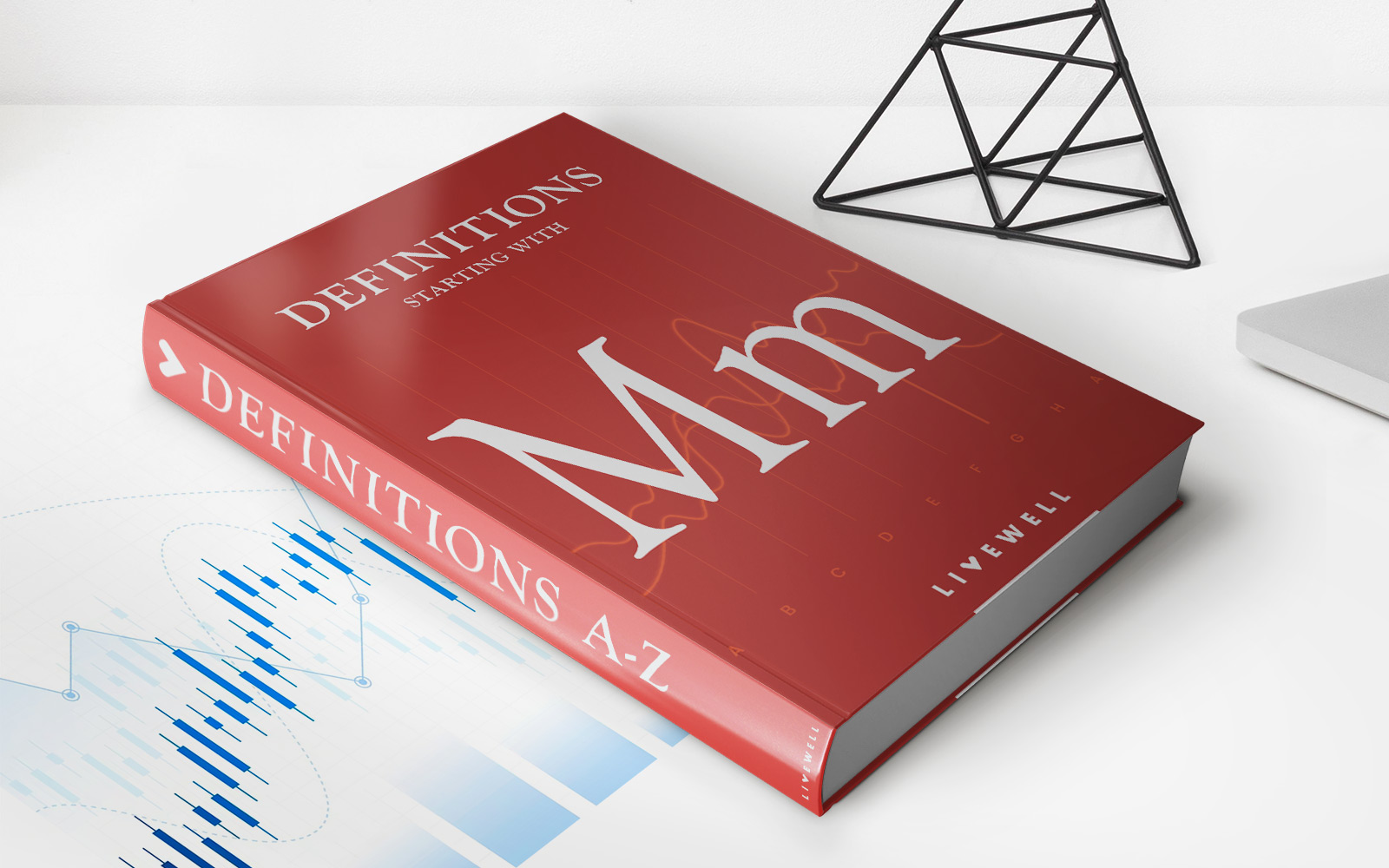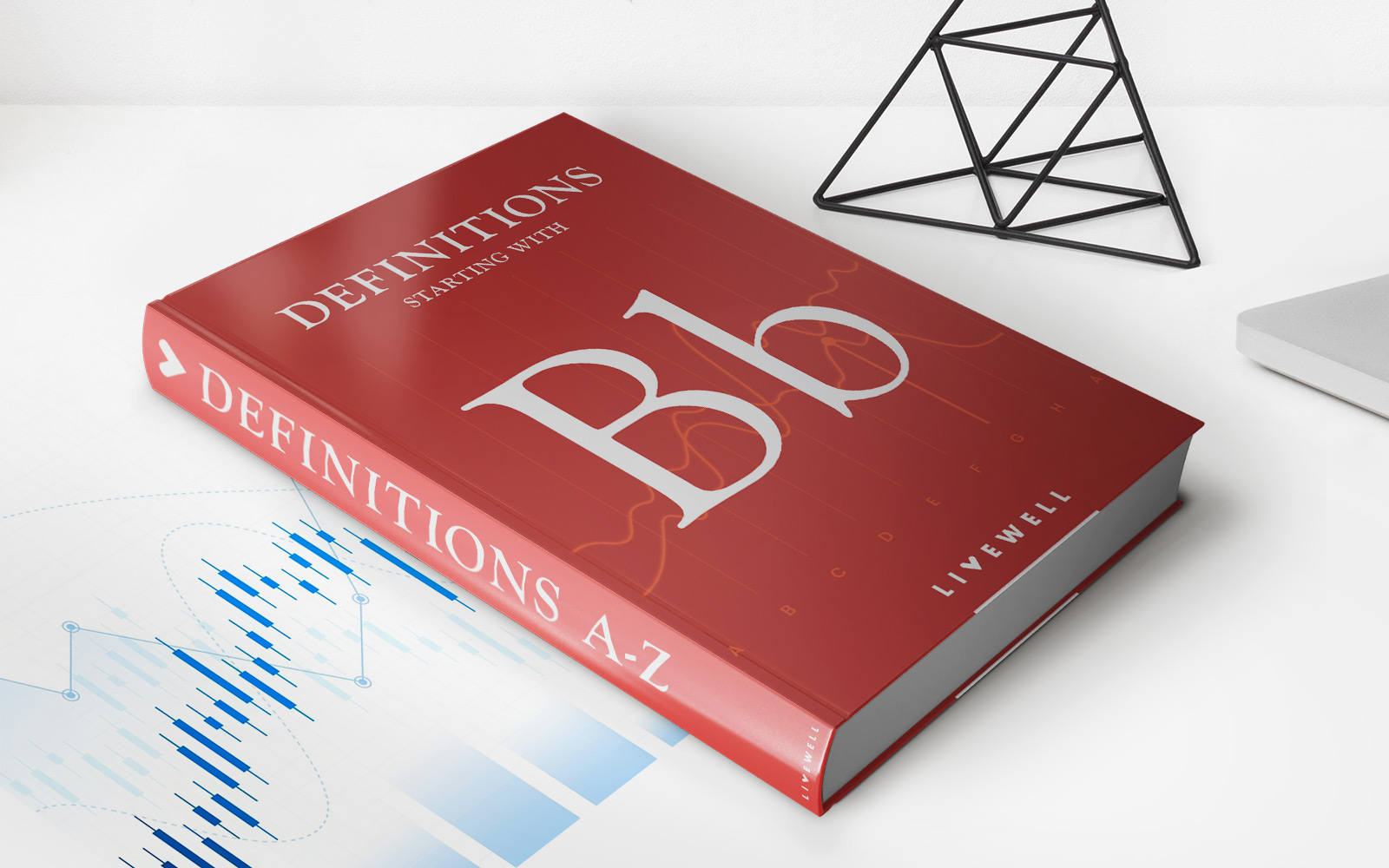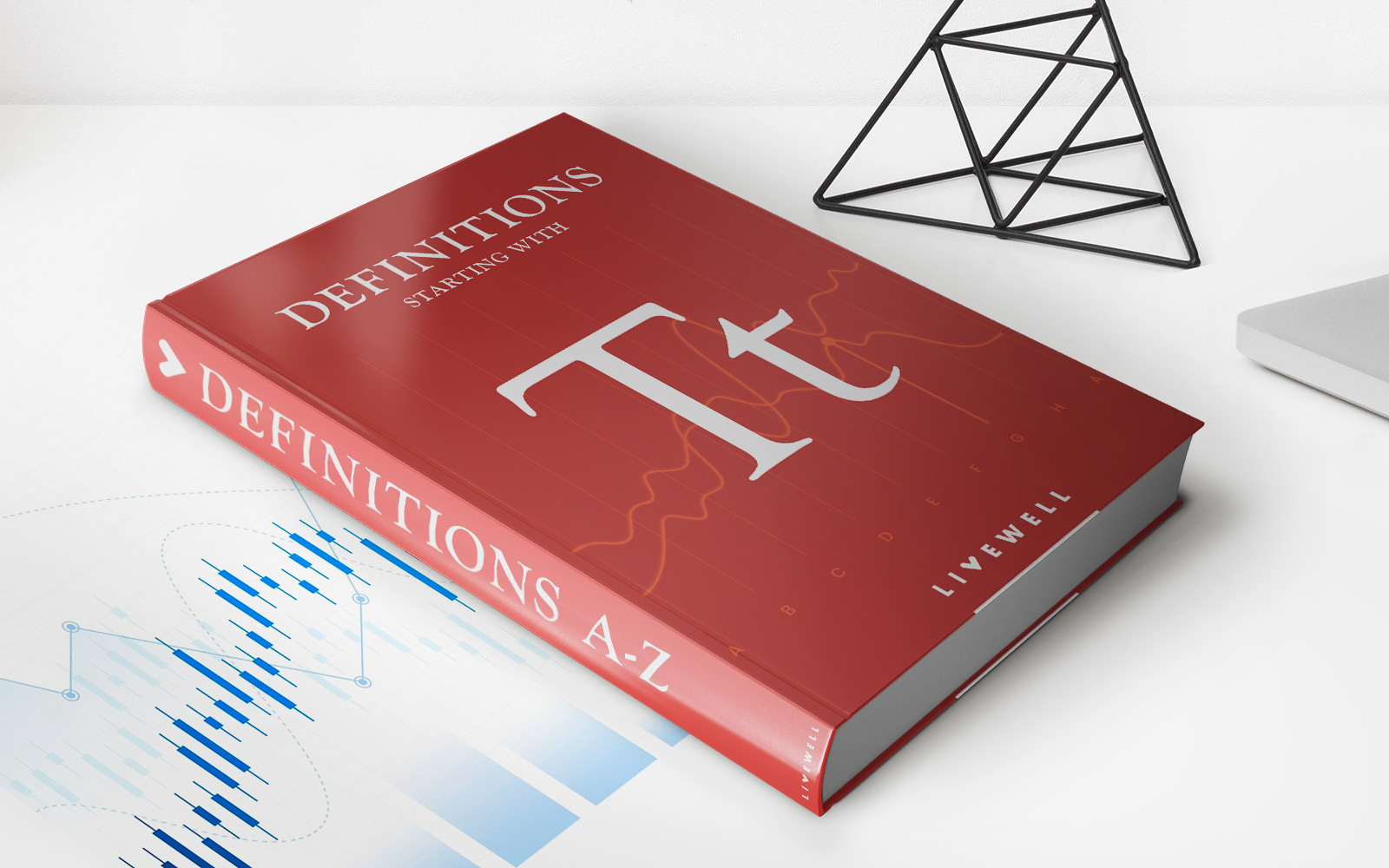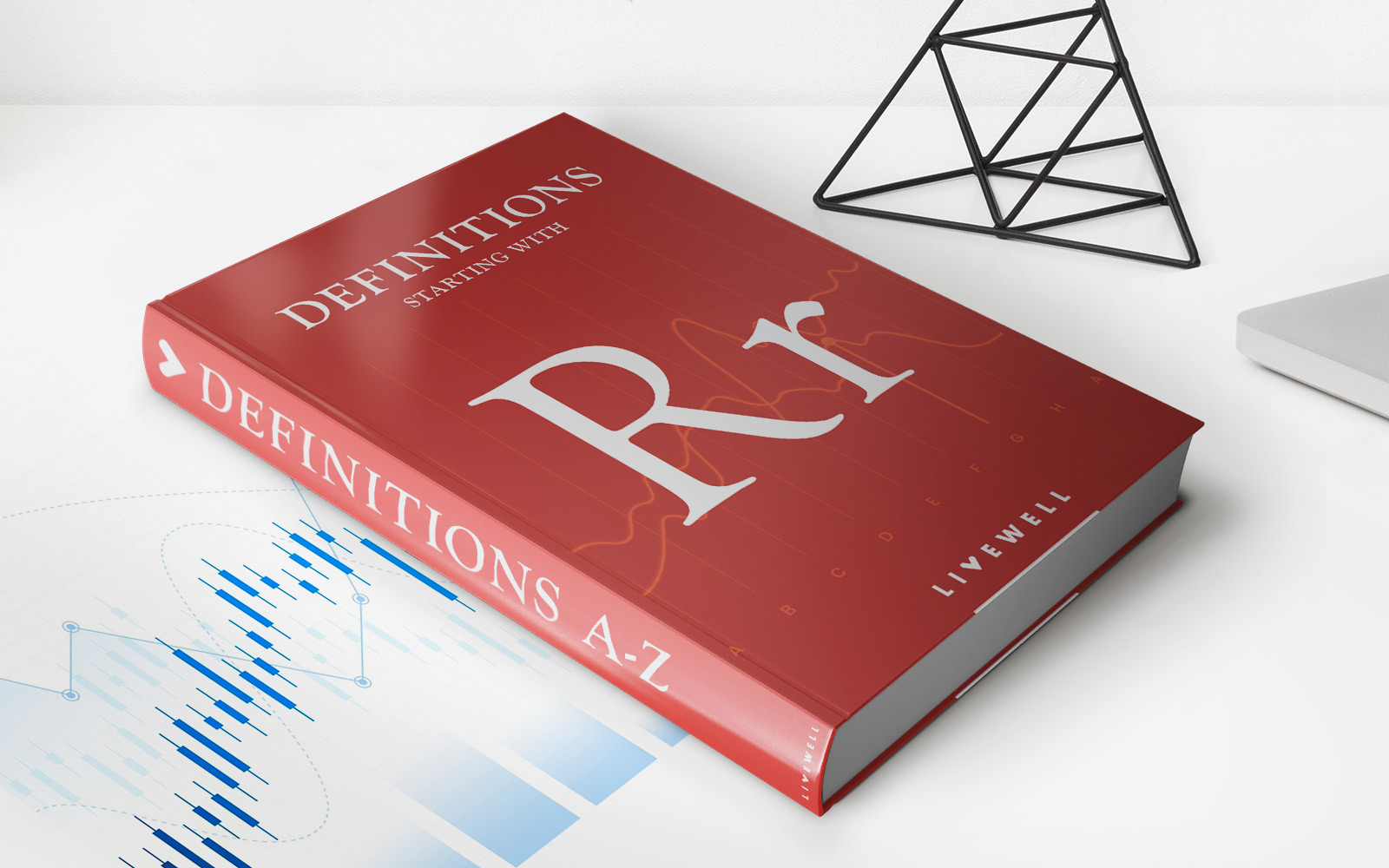

Finance
What Is An Account Based Pension
Published: November 27, 2023
Learn what an account-based pension is and how it can benefit your finances. Take control of your retirement savings and ensure a comfortable future with this flexible financial option.
(Many of the links in this article redirect to a specific reviewed product. Your purchase of these products through affiliate links helps to generate commission for LiveWell, at no extra cost. Learn more)
Table of Contents
- Introduction
- Definition of an Account Based Pension
- Eligibility for an Account Based Pension
- How an Account Based Pension Works
- Benefits of an Account Based Pension
- Drawbacks of an Account Based Pension
- Tax Implications of an Account Based Pension
- Comparison with Other Retirement Income Options
- Considerations When Choosing an Account-Based Pension Provider
- Conclusion
Introduction
An account-based pension is a type of retirement income stream that allows individuals to access their superannuation savings in regular income payments. It provides flexibility and control over retirement savings, enabling retirees to plan for their financial needs while enjoying the benefits of their hard-earned money.
As people approach retirement, it’s important to carefully consider how to manage their superannuation savings to fund their lifestyle after leaving the workforce. An account-based pension offers a secure and tax-effective way to access these funds while still providing investment growth potential.
In this article, we will explore the concept of an account-based pension and delve into its eligibility criteria, how it works, the benefits it offers, the potential drawbacks, tax implications, and how it compares to other retirement income options. We will also touch on important considerations to keep in mind when choosing an account-based pension provider.
Whether you’re approaching retirement or simply interested in gaining a better understanding of retirement income options, this article will provide you with valuable insights into the world of account-based pensions.
Definition of an Account Based Pension
An account-based pension, also known as an allocated pension or an account-based income stream, is a retirement income product that allows individuals to convert their superannuation savings into a regular income stream. It is a popular choice among retirees who wish to have more control over their retirement funds and the flexibility to tailor their income to meet their lifestyle needs.
Unlike a traditional defined benefit pension, where the retiree receives a fixed income for life, an account-based pension provides retirees with the freedom to determine the amount and frequency of their income payments. The pension is paid from a superannuation account, with the balance being invested in a range of assets such as shares, managed funds, or term deposits.
One key feature of an account-based pension is the preservation and growth of the underlying superannuation capital. Retirees have the potential to earn investment returns over the life of their pension, allowing their savings to continue to grow even as they draw an income.
Another important aspect of an account-based pension is that it is subject to minimum annual withdrawal requirements set by the government. These requirements ensure that retirees gradually draw down their superannuation savings over their retirement years.
It is worth noting that an account-based pension is only available to individuals who have reached their preservation age, which is generally between 55 and 60, depending on the year of birth. Once an individual meets the preservation age and satisfies certain conditions of release, they can commence an account-based pension.
Overall, an account-based pension provides retirees with flexibility, control, and potential growth for their superannuation savings while ensuring a regular income stream throughout their retirement years.
Eligibility for an Account Based Pension
To be eligible for an account-based pension, individuals must meet certain criteria regarding their age, superannuation balance, and retirement status.
1. Age Requirement: The first requirement is reaching the preservation age, which varies depending on the individual’s date of birth. The preservation age is currently set between 55 and 60 years old. Once an individual reaches their preservation age, they become eligible to access their superannuation and commence an account-based pension.
2. Retirement or Transition to Retirement: Individuals can only commence an account-based pension if they have retired from the workforce or have entered into a transition to retirement arrangement. The retirement condition of release typically requires permanently ceasing gainful employment. However, under a transition to retirement arrangement, individuals can access a limited portion of their superannuation savings while continuing to work.
3. Superannuation Balance: There is no minimum superannuation balance required to start an account-based pension. However, it is important to consider the amount available in the superannuation account, as it will determine the income stream that can be received during retirement.
It is important to note that the eligibility criteria may vary depending on specific circumstances, including government regulations and the individual’s superannuation provider. It’s recommended to consult with a financial advisor or superannuation expert to discuss eligibility requirements and ensure compliance with all necessary regulations.
Once an individual meets the eligibility criteria, they can choose to commence an account-based pension with their superannuation provider. It is essential to carefully consider various factors, such as investment options, fees, and payment arrangements, to make an informed decision and select a pension provider that best suits their needs and retirement goals.
An account-based pension offers individuals the opportunity to effectively manage their retirement savings and enjoy a regular income stream throughout their retirement years. By meeting the eligibility criteria and making informed decisions, retirees can confidently embark on their retirement journey with financial security and peace of mind.
How an Account Based Pension Works
An account-based pension operates by converting a portion of an individual’s superannuation savings into a regular income stream. Here’s how it works:
1. Commencement: Once an individual meets the eligibility criteria, they can choose to commence an account-based pension with their superannuation provider. The pension starts by transferring a lump sum or a portion of the superannuation balance into a separate pension account.
2. Investment Options: The pension account offers various investment options, such as shares, managed funds, term deposits, or a combination of these. The retiree can decide how the funds in the pension account are invested, depending on their risk appetite and investment goals. It’s important to note that investment returns influence the growth or decline of the pension balance over time.
3. Income Payments: The retiree can specify the frequency and amount of income payments they wish to receive from the account-based pension. Common options include monthly, quarterly, or annual payments. The income payments can be adjusted periodically to account for changing financial needs or circumstances.
4. Minimum Withdrawals: The government has set minimum annual withdrawal amounts that retirees must draw from their account-based pension. These minimum withdrawal amounts are based on the retiree’s age and are intended to ensure that retirement savings are gradually drawn down over time. Failure to meet the minimum withdrawal requirements may result in penalties or tax implications.
5. Additional Contributions: While an account-based pension primarily relies on the superannuation savings transferred into the pension account, retirees may have the option to make additional contributions. These contributions can be made from other sources such as non-superannuation savings, investment income, or proceeds from the sale of assets.
6. Account Balance and Investment Growth: The account balance of an account-based pension will fluctuate based on the performance of the chosen investments. Investment growth (or decline) occurs as a result of changes in asset values and the return generated by the investments. The balance will continue to be invested, potentially allowing the retiree’s superannuation savings to grow over time.
By understanding how an account-based pension works, retirees can make informed decisions regarding investment choices, income payments, and fund management. It offers flexibility, control over retirement savings, and the potential for continued growth to support long-term financial security.
Benefits of an Account Based Pension
An account-based pension offers several benefits to individuals who are looking for a retirement income stream that provides flexibility, control, and financial security. Here are some of the key benefits:
1. Flexibility in Income Payments: An account-based pension allows retirees to have control over their income by choosing the frequency and amount of their payments. They can adjust their income stream to align with their lifestyle needs, whether it’s a regular monthly payment or a lump sum withdrawal to cover unexpected expenses.
2. Potential Investment Growth: Unlike traditional fixed pension payments, an account-based pension allows retirees to keep their superannuation savings invested in various assets, such as shares or managed funds. This provides the potential for investment growth over time, allowing the retiree’s capital to increase even as they receive regular income payments.
3. Access to Superannuation Savings: By commencing an account-based pension, individuals gain access to their superannuation savings. This can be particularly valuable for retirees who wish to use their retirement funds to pay off debts, invest in other assets, or enjoy a higher quality of life during their retirement years.
4. Tax Benefits: Account-based pensions offer certain tax advantages. For example, for individuals aged 60 and above, the income payments received from the pension are generally tax-free. Additionally, investment earnings within the pension account are also tax-free. This can result in significant tax savings and enhance the overall financial position of retirees.
5. Estate Planning: An account-based pension provides estate planning benefits, allowing retirees to nominate beneficiaries who will receive the remaining pension balance upon their passing. This can provide peace of mind, ensuring that their wealth is passed on according to their wishes and potentially reducing the impact of inheritance taxes.
6. Social Security Benefits: Account-based pensions are usually assessed more favorably by social security means-tested programs compared to other forms of retirement income. This means that individuals receiving an account-based pension may be eligible for a higher level of social security benefits, further supporting their financial well-being in retirement.
It’s important to note that the benefits of an account-based pension may vary depending on individual circumstances and government regulations. It’s advisable to seek professional financial advice to fully understand the specific benefits and implications of an account-based pension based on your unique situation.
Overall, an account-based pension offers retirees flexibility, control, potential investment growth, and various tax and estate planning advantages. It provides a comprehensive retirement income solution that supports individuals in maintaining their desired lifestyle throughout their golden years.
Drawbacks of an Account Based Pension
While an account-based pension offers numerous benefits, it’s important to consider the potential drawbacks associated with this retirement income option. Understanding these drawbacks can help individuals make informed decisions about whether an account-based pension is the right choice for them. Here are some key drawbacks to consider:
1. Market Volatility: As an account-based pension’s value is tied to the performance of the chosen investments, retirees are exposed to market fluctuations and volatility. If the investments perform poorly or experience a downturn, it can impact the pension balance and, subsequently, the income payments. Retirees need to be prepared for the inherent risks associated with market fluctuations.
2. Longevity Risk: An account-based pension does not provide a guaranteed income for life, unlike a traditional defined benefit pension. Individuals who outlive their superannuation savings may face the risk of running out of money. To mitigate this risk, retirees need to carefully manage their income withdrawals to ensure their pension lasts throughout their retirement years.
3. No Guaranteed Income Amount: Unlike a defined benefit pension, which provides a fixed income for life, an account-based pension’s income payments can vary depending on the investment returns and market conditions. This lack of a guaranteed income amount can make it challenging for retirees to plan their retirement expenses with certainty.
4. Investment Decision-Making Responsibility: With an account-based pension, retirees are responsible for making investment decisions or seeking professional advice. This can be daunting for individuals who may not have significant investment knowledge or experience, potentially leading to suboptimal investment choices and outcomes.
5. Minimum Withdrawal Requirements: The government sets minimum annual withdrawal amounts for account-based pensions to ensure retirees draw down their superannuation savings over time. These requirements may conflict with the retiree’s financial needs or investment goals. Failure to meet the minimum withdrawal amounts may result in penalties or tax consequences.
6. Impact on Social Security Benefits: While an account-based pension can provide tax advantages, it can also affect social security benefits. Depending on the income received from the pension, retirees may be subject to means-testing, which could reduce their entitlement to various government benefits.
It’s crucial for individuals considering an account-based pension to thoroughly evaluate these drawbacks and determine whether the benefits outweigh the potential challenges. Seeking professional financial advice can provide valuable insights and guidance in making an informed decision that aligns with one’s retirement goals and risk tolerance.
Please note that the specific drawbacks and implications of an account-based pension may vary based on individual circumstances and government regulations. It’s essential to consult with a financial advisor or superannuation expert to fully understand the potential drawbacks before making any decisions.
Tax Implications of an Account Based Pension
Understanding the tax implications of an account-based pension is crucial for retirees who want to maximize the tax efficiency of their retirement income. Here are the key tax considerations to keep in mind:
1. Tax-Free Income: For individuals aged 60 and above, the income payments received from an account-based pension are generally tax-free. This means that the regular payments received from the pension account are not subject to income tax, providing retirees with a tax-efficient source of income to support their retirement lifestyle.
2. Tax on Investment Earnings: While the income payments may be tax-free, the investment earnings within the pension account are subject to tax. However, the tax rate on investment earnings is generally lower than the individual’s marginal tax rate. The exact tax treatment may vary depending on the specific investments held within the pension account.
3. Minimum Withdrawal Requirements: As mentioned earlier, the government sets minimum annual withdrawal amounts for account-based pensions. These minimum withdrawal amounts are considered taxable income. Retirees need to include these amounts in their tax returns and pay tax at their applicable marginal tax rate.
4. Effect on Social Security Benefits: The income received from an account-based pension can affect eligibility for certain social security benefits. Means-tested benefits, such as the Age Pension, may be reduced or completely phased out if the income received from the pension exceeds certain thresholds. Retirees should carefully consider the impact on their overall financial situation before making decisions regarding their account-based pension.
5. Tax Deductibility of Expenses: Retirees may be entitled to claim certain expenses related to managing their account-based pension as tax deductions. These expenses may include financial advice fees, investment management fees, and administration fees. It’s important to keep records of these expenses and consult a tax professional to determine eligibility for deductions.
6. Implications on Estate Planning: An account-based pension can have implications for estate planning and inheritance. Upon the passing of the pension holder, the remaining balance of the pension account may be transferred as a death benefit to nominated beneficiaries. The tax treatment of these death benefit payments will depend on several factors, including the age of the beneficiary and whether they are considered a dependant for tax purposes.
It’s essential for retirees to stay updated on any changes to tax laws and regulations that may affect their account-based pension. Consulting with a qualified tax advisor or financial planner is highly recommended to ensure compliance with tax obligations and optimize tax efficiency throughout retirement.
Please note that the tax implications of an account-based pension will vary based on individual circumstances and government regulations. It’s important to consult with a tax professional or financial advisor to fully understand the specific tax implications that apply to your account-based pension.
Comparison with Other Retirement Income Options
When planning for retirement, individuals have various choices for generating income in their golden years. Here, we compare an account-based pension with two common retirement income options: the Age Pension and a lifetime annuity.
1. Account-Based Pension vs. Age Pension:
- Income Source: An account-based pension is funded by an individual’s superannuation savings, while the Age Pension is a government-provided income support payment.
- Eligibility: Account-based pensions have specific eligibility criteria based on age and retirement status, while the Age Pension depends on factors such as age, residency, and income/assets tests.
- Flexibility: An account-based pension offers flexibility in terms of income payments, investment choices, and estate planning. The Age Pension has set income thresholds and limited investment options.
- Means Testing: Account-based pension income payments do not impact eligibility for the Age Pension, but investment assets held within the pension account may be deemed. The Age Pension is subject to means testing, where the amount received is reduced based on income and asset levels.
- Tax Implications: Account-based pension income payments enjoy favorable tax treatment, with potential tax-free status for individuals aged 60 and above. The Age Pension may be taxable, depending on an individual’s overall income situation.
2. Account-Based Pension vs. Lifetime Annuity:
- Income Source: Both an account-based pension and a lifetime annuity provide regular income payments. However, an account-based pension relies on individual superannuation savings, while a lifetime annuity involves purchasing an annuity contract from an insurance company.
- Guaranteed Income: A lifetime annuity provides a guaranteed income for life, regardless of market fluctuations or longevity. An account-based pension, on the other hand, does not provide a guaranteed income and is subject to market performance and individual management.
- Flexibility: An account-based pension offers greater flexibility in terms of income payments, investment choices, and potential for growth. A lifetime annuity provides a fixed income with limited flexibility or control over the funds.
- Tax Implications: The tax treatment varies between an account-based pension and a lifetime annuity. While an account-based pension may have tax advantages, the taxable portion of a lifetime annuity’s income is subject to the individual’s marginal tax rate.
- Legacy Planning: An account-based pension allows for the remaining balance to be inherited by beneficiaries. A lifetime annuity typically does not have a residual balance or an inheritance component, unless specifically structured with additional features.
Choosing the most suitable retirement income option depends on individuals’ financial circumstances, goals, risk tolerance, and preferences. It is essential to carefully evaluate the pros and cons of each option and seek professional financial advice to make an informed decision that aligns with one’s retirement objectives.
Considerations When Choosing an Account-Based Pension Provider
When selecting an account-based pension provider, there are several important factors to consider to ensure the chosen provider aligns with your retirement goals and offers the best possible retirement income options. Here are some key considerations:
1. Reputation and Stability: Look for a reputable and well-established pension provider with a solid track record. Consider their financial stability, customer satisfaction ratings, and market reputation. This ensures that your retirement savings are in safe hands and that the provider has the expertise to manage your account effectively.
2. Product Features and Flexibility: Evaluate the product features offered by different providers. Consider the flexibility of income payments, investment options, and the ability to adjust income amounts or payment frequency to meet your changing financial needs. Look for features that align with your retirement goals and offer the right level of control and customization.
3. Investment Performance and Options: Assess the investment performance of each provider’s pension funds. Review their historical performance and the range of investment options available. Look for diversification across different asset classes and consider your risk tolerance and investment objectives. It is important to choose a provider with a strong investment track record and suitable investment options to help grow and protect your retirement savings.
4. Fees and Charges: Review the fees and charges associated with the account-based pension. Compare the administration fees, investment management fees, and any other charges applicable to the pension account. Consider the impact of fees on the overall growth of your superannuation savings and the income you will receive in retirement. Look for a provider with competitive fees and a transparent fee structure.
5. Customer Service and Support: Consider the level of customer service and support provided by the pension provider. This includes ease of communication, availability of online account access, and responsiveness to queries or concerns. A provider with excellent customer service can assist in addressing any issues that may arise and provide the necessary support throughout your retirement journey.
6. Additional Benefits and Services: Some pension providers may offer additional benefits or services that enhance the overall retirement experience. These could include financial planning assistance, access to educational materials or seminars, or discounts on other financial products. Assess whether these additional benefits add value and align with your retirement needs and priorities.
7. Regulatory Compliance: Ensure that the pension provider complies with all relevant regulatory requirements and is properly licensed to offer account-based pension services. This ensures the provider operates within the guidelines set by government authorities and provides you with the necessary legal protections.
When choosing an account-based pension provider, it’s essential to carefully consider these factors and conduct thorough research. Seek recommendations from trusted financial advisors and consider obtaining multiple quotes and comparing the benefits and features offered by different providers. Taking the time to make an informed decision will help ensure that your retirement income needs are adequately met and that your financial future is secure.
Conclusion
Choosing the right retirement income option is a crucial decision that can significantly impact your financial well-being in your golden years. An account-based pension offers retirees flexibility, control, and the potential for investment growth, making it a popular choice for many individuals.
In this article, we have examined the definition of an account-based pension, its eligibility criteria, how it works, the benefits it offers, the potential drawbacks, and the tax implications. We have also compared it with other retirement income options, such as the Age Pension and lifetime annuities. Additionally, we discussed the key considerations to keep in mind when selecting an account-based pension provider.
An account-based pension provides retirees with the ability to tailor their income payments to meet their unique financial needs. With the potential for investment growth, retirees can enjoy the benefits of their superannuation savings while still allowing their capital to grow over time.
However, it’s important to carefully evaluate the potential drawbacks of an account-based pension, such as market volatility and longevity risk. By understanding these considerations, individuals can make informed decisions about whether an account-based pension is the right choice for their retirement strategy.
When choosing an account-based pension provider, it’s crucial to consider factors such as reputation, product features, investment options, fees, customer service, and regulatory compliance. These considerations will help ensure that the chosen provider aligns with your retirement goals and provides the necessary support and services to meet your needs.
In conclusion, an account-based pension can be a valuable retirement income option for individuals looking for flexibility, control, and potential growth. However, it’s essential to carefully consider the unique circumstances and objectives before making a decision. Seeking professional financial advice can provide additional guidance and support in choosing the most suitable retirement income strategy for a secure and comfortable retirement.














